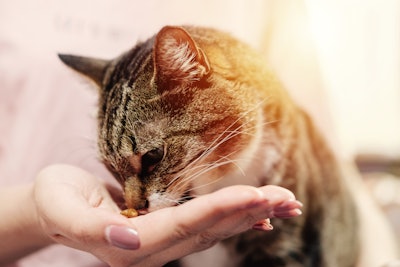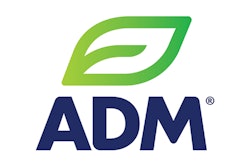
In announcing its November 14, 2024, acquisition of Whitebridge Pet Brands, General Mills focused on Whitebridge’s brands specializing in cat food and pet treats, including Tiki Pets and Cloud Star. The announcement came just two months after General Mills released its fiscal year 2025 first quarter financial results, which included a decline in pet treat sales by “mid-single digits.”
Is the company wise, then, to add to its pet treat portfolio now? Perhaps General Mills sees the Whitebridge acquisition as a way to boost its pet treats revenue by adding volume. The wisdom of that strategy may depend on whether the new brands bring it more cat treats versus dog treats.
That’s because recent U.S. pet food market data from NielsenIQ (NIQ) show only very slight growth for dog treats, while cat treats have continued their heady growth rates of recent years. Of course, the two treat categories differ significantly in size, as do the respective populations of dogs and cats in the U.S. And, as with sales, one species (cats) is on the upswing as the other (dogs) remains flat or is showing slight declines in terms of young animals going to new homes, according to Packaged Facts.
Rising pet treat prices raise concerns
Recent slowdowns in growth rates, whether for the dog population, their food or their treats, are partially due to the inflation that pushed pet food and other prices so high for two years. Though monthly increases seem to have stopped in the U.S. — pet food just registered its seventh straight month of deflation in October 2024 — prices are still more than 20% higher than three years ago.
Any impact on complete and balanced pet foods has been mostly in the realm of financially strapped pet owners trading down to lower-priced products, since their pets still need to eat regularly. Yet with pet treats being a purely discretionary purchase, owners may be pulling back on buying frequency or volume, especially for dogs, the bigger eaters.
Packaged Facts’ newest report, “Pet Food in the US, 18th Edition,” showed 55% of U.S. pet owners surveyed in summer 2024 are concerned about the rising prices for pet treats, breaking down into 21% very concerned and 34%, somewhat concerned. While that’s a fair amount lower than the 70% total concerned about rising costs of pet food, it’s still more than half of the owners surveyed.
How does that translate to actual sales of pet food and treat products? For dog food, it means only 1.1% growth for dollar sales in the 52-week-period ending October 5, 2024, as tracked by NIQ. And dog food unit sales have declined 1.7%, with volume down .9%. Broken down by subcategories (dry, wet, treats), only dog treats show growth in for all three measures, and small growth at that: 1% for dollars, 1.9% for units and 1.6% for volume.
Cat food, on the other hand, has shown positive growth in all measures and all subcategories, plus the category total. In fact, dollar sales are up 6.1% for the overall category, with cat treats posting a 9.5% rise in dollar sales, 4.3% for units and 9.4% for volume.
True, cat food and treat sales are much smaller to start with: US$14.7 billion total for the 52-week-period, with cat treats accounting for only 12.8% of that, or about US$1.88 billion. In contrast, the total dog food market reached US$33.5 billion, and dog treats made up 27.9% of that, or US$9.35 billion. Even with their strong growth rates, cat treats (and cat food) have a lot of catching up to do.
Pet treat preferences in Europe
Another new report, “Treating (and Supplementing) Pets Like Part of the Family,” from ingredients supplier ADM, focuses on pet treat preferences in Europe. It doesn’t include sales data, rather highlighting trends in pet health concerns, willingness to purchase and similar areas.
For example, more than half of the owners surveyed in four countries — France, Germany, Poland and the U.K. — said they’re willing to pay more for pet treats with functional benefits. Their top concerns center on ones common to other markets, including healthy aging/general wellness, mobility and joints, dental and oral health, and skin and coat health. “European pet parents are more interested in functional treats for issues they can plainly see (or smell) their pets experiencing, like oral health and joint health,” the report says. “These products also have greater availability, accessibility and awareness in the marketplace.”
In all the countries except France, the majority of pet owners purchase pet treats at least every two months: 55% in Poland, 54% in Germany, 52% in the U.K., yet only 41% in France. Conversely, 25% of the French pet owners said they never purchase treats, followed by 20% for the U.K., 17% for Germany and 13% for Poland.
When it comes to treat formats, 56% of all the owners surveyed seemed to believe their pets prefer chewy treats, though 50% said they want treats in cookie or biscuit form. “Toppers or mix-ins are also a growing format of interest at 25%,” the report reads, and 27% of German pet owners said they would like to buy treats as a squeezable paste.

















